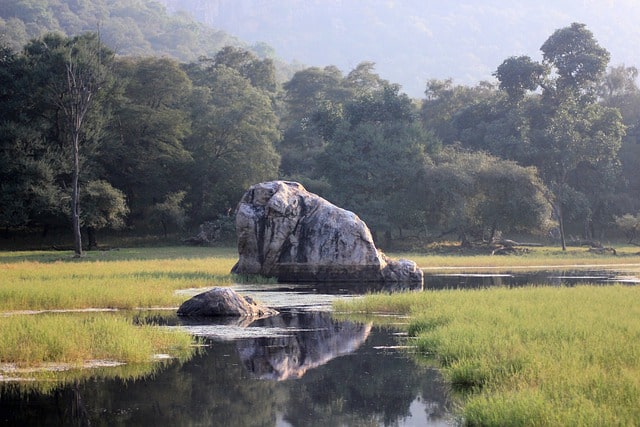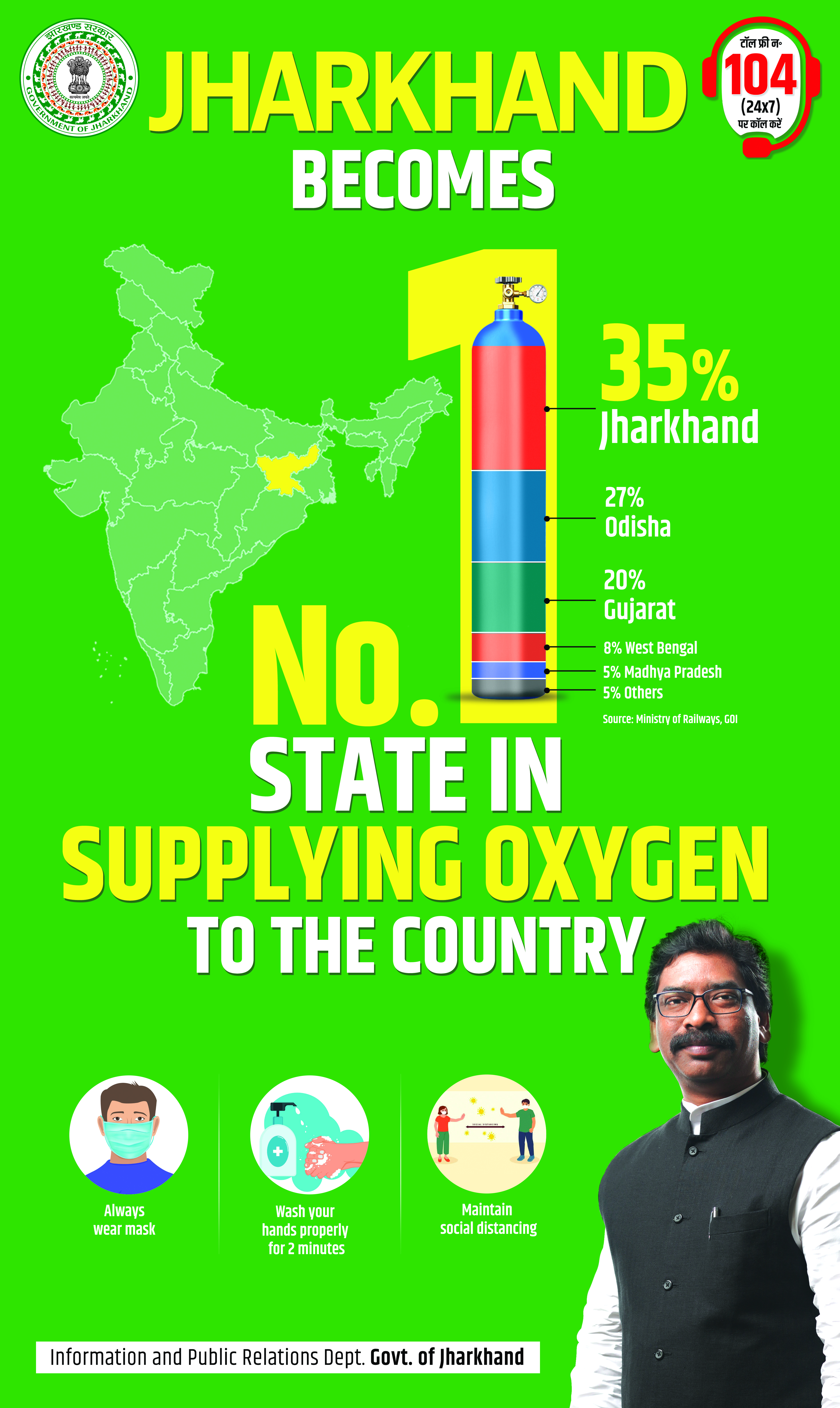
Minister for Environment, Forest and Climate Change, Shri Bhupender Yadav, today released the ‘India State of Forest Report 2021’ prepared by the Forest Survey of India (FSI) which has been mandated to assess the forest and tree resources of the country.
Sharing the findings, the Minister informed that the total forest and tree cover of the country is 80.9 million hectare which is 24.62 percent of the geographical area of the country. As compared to the assessment of 2019, there is an increase of 2,261 sq km in the total forest and tree cover of the country.
The Minister expressed happiness over the fact that the present assessment reveals that 17 states/UT’s have above 33 percent of the geographical area under forest cover and stated that the focus of the government under the leadership of Prime Minister Shri Narendra Modi is not just to conserve the forests quantitatively but to enrich it qualitatively.
The ISFR-2021 provides information on forest cover, tree cover, mangrove cover, growing stock, carbon stock in India’s forests, forest fire monitoring, forest cover in tiger reserve areas, above ground estimates of biomass using SAR data & climate change hotspots in Indian forests.
MAJOR FINDINGS
METHODOLOGY
In tune with the Government of India’s vision of digital India and the need for integration of digital data sets, FSI has adopted using the vector boundary layers of various administrative units upto districts level as provided by Survey of India along with digital open series topo sheets, in order to ensure comprehensive compatibility with the geographical areas as reported in Census, 2011.
The biennial assessment of forest cover of the country using mid-resolution Satellite data is based on interpretation of LISS-III data from Indian Remote Sensing satellite data (Resourcesat-II) with a spatial resolution of 23.5 meters with the scale of interpretation 1:50,000 to monitor forest cover and forest cover changes at District, State and National level.
This information provides inputs for various global level inventories, reports such as GHG Inventory, Growing Stock, Carbon Stock, Forest Reference Level (FRL) and international reporting to UNFCCC targets under CBD Global Forest Resource Assessment (GFRA) for planning and scientific management of forests.
Satellite data for the entire country was procured from NRSC for the period October to December 2019. The satellite data interpretation is followed by rigorous ground truthing. Information from other collateral sources are also used to improve the accuracy of the interpreted image.
The accuracy level achieved in the current assessment is the significantly high. The accuracy of forest cover classification has been assessed 92.99%. The accuracy of classification between forest and non-forest classes has been assessed 95.79% against internationally accepted accuracy of classification of more than 85%. A rigorous QC & QA exercise was also carried out.
OTHER SIGNIFICANT FEATURES of ISFR 2021
In the present ISFR 2021, FSI has included a new chapter related to the assessment of forest cover in the Tiger Reserves, Corridors and Lion conservation area of India. In this context, the decadal assessment of change in forest cover within Tiger Reserves, Corridors and Lion conservation area helps in assessing the impact of conservation measures and management interventions that have been implemented over the years.
For decadal assessment, change in forest cover, during the period between ISFR 2011 (data period 2008 to 2009) and the current cycle (ISFR 2021, data period 2019-2020) within each Tiger Reserves has been analysed.
A new initiative of FSI has also been documented in the form of a chapter, where the ‘Above Ground Biomass’ has been estimated. FSI, in collaboration with Space Application Centre (SAC), ISRO, Ahmedabad, initiated a special study for estimation of Above Ground Biomass (AGB) at pan-India level, using L- band of Synthetic Aperture Radar (SAR) data. The results for the States of Assam and Odisha (as well as AGB maps), were presented earlier in ISFR 2019. The interim results for AGB estimates (and AGB maps) for the entire country are being presented as a new chapter in ISFR 2021. The detailed report will be published after completion of the study.
FSI in collaboration of with Birla Institute of Technology & Science (BITS) Pilani, Goa Campus has performed a study based on ‘Mapping of Climate Change Hotspots in Indian Forests’. The collaborative study was carried out with the objective to map the climatic hotspots over the forest cover in India, using computer model-based projection of temperature and rainfall data, for the three future time periods i.e. year 2030, 2050 and 2085.
The report also contains information on various parameters State/UT wise. Special thematic information on forest cover such as hill, tribal districts, and north eastern region has also been given separately in the report.
It is expected that the information given in the report would provide valuable information for policy, planning and sustainable management of forest and tree resources in the country.
The full report is available at the following URL: https://fsi.nic.in/forest-report-2021-details.
